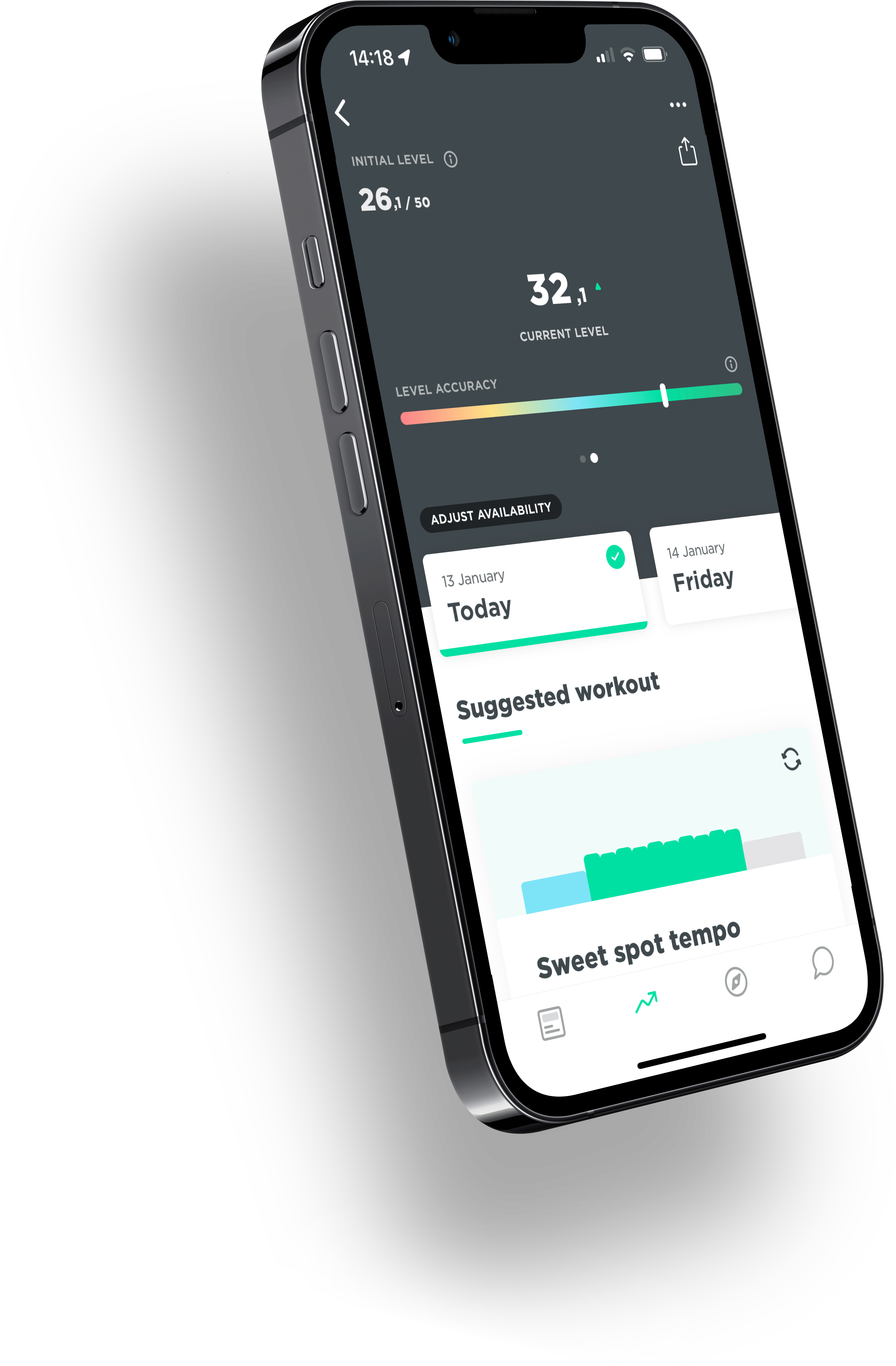Perhaps this is the most frequently asked question that we, as cycling trainers, get asked. In this article we give an indication, with the necessary caveats, how much you can probably still improve.
Improve on what?
In cycling, you can improve in several areas. Improving your sprint or short intensive efforts is very different from improving the ability to ride long or several days in a row. In general, the FTP, or the power that you (theoretically) can sustain for a maximum of one hour, is seen as a reference of your performance level. Improving your FTP is also an excellent goal for most recreational cyclists to sustain longer efforts (such as climbs), and also recover more quickly from such efforts. The FTP can be measured with an exercise test or (slightly less accurately) with a 20-minute, DIY field test: you go full throttle for 20 minutes like you would in a time trial that lasts for 20 minutes. 95% of the average power delivered over these 20 minutes is generally used as a reliable measure of your FTP.
How good are pros?
For a good comparison between individuals we divide the FTP by body weight. This way we get the power per kilogram at the FTP and eliminate the absolute power difference between heavy and light cyclists. So if you can lose a few pounds plus you manage to get your FTP up then the wattage per kilogram on the FTP can be a double winner. A Tour de France pro has an FTP between 5.5 W/kg and 6.5 W/kg (the highest number for the GC contenders). An untrained person usually sees scores between 1.5 to 2 W/kg (men) and 1.3 to 1.7 W/kg (women).
Age effect with cycling
Although the maximum power produced at very short intensive efforts such as sprinting falls with age, a cyclist should be able to continue to improve the FTP until the age of 40 to 45. Here we assume that someone is maximally trained. It is true that if you get older may need more training than a younger cyclist. After the age of 45, the challenge is more not to deteriorate rather than still improve. In practice, however, we often see quite fit 50-year-olds who are much healthier and more vital than they were in their 30s.
Short and long-term improvement
We also see a fair number of recreational cyclists that do not improve at all year over year. Because after a good season, they put their legs up and what they have carefully built up over 9 months is completely undone in a 3-month rest period in the winter. In those 3 months, the VO2max will decline by 15 to 20%. Regaining that lost fitness will take much more than those three months. Therefore, we strongly recommend continuing to train, even at lower volumes. Taking longer rest periods of more than two weeks is actually never a good idea. Also, make sure you do a little more each year if you want to keep improving. The training volumes should increase a little each year so as not to reach a plateau in your training progress. Keep training and doing a little more each year is therefore essential to keep improving.
Nature or nurture
So training is important to keep improving, but ultimately everyone hits his or her ceiling. This ceiling depends on the genes you have inherited from your parents, and your talent. Ultimately, the Tour de France winners are freaks of nature who have reached an exceptional level of fitness after many years of training and dedication. Without this talent and with only hard training, not only would they never have won the Tour, but even turning pro would have been out of the question. In general, any healthy person, unless living a very unhealthy lifestyle, should be able to improve to at least 3-3.5 W/kg (men) and 2.5-3 W/kg (women) until the age of 40-45. After that, the inevitable aging becomes a complicating factor.
Conclusion
We can summarize the above in a table. It has become clear that to what extent someone can improve is a complex calculation with many variables. The point of departure, age, talent and over which period improvement can be expected are essential to begin with. Especially the degree of talent is impossible to predict. Furthermore, what your lifestyle looked like in the years before you started training seriously, is more relevant that your absolute age level. Until you are 45….
| In 3 months | In 1 year | Long term | |
| 1-2 w/kg | 10-20% | 20-50% | ? |
| 2-3 w/kg | 5-15% | 10-40% | ? |
| Above 3 w/kg | ? | ? | ? |
This table is therefore purely indicative and meant to give a rough idea of what factors are important. With the wide ranges we try to indicate that predicting the exact percentage of improvement is something for fortune tellers and not for cycling trainers.
Now that you know by how much you can improve, the only question that remains is how to do it. We recommend you to take a look at our training plan application JOIN cycling. It provides you with a dynamic training plan that takes into account your level, your goal and your availability. It’s like working with a personal coach for a fraction of the cost.


